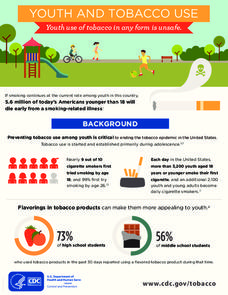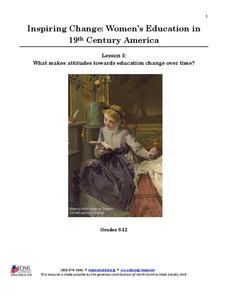Social Media Toolbox
Social Media Usage
Is there a difference in the way organizations present news via social media and in print? The third in a series of 16 lessons from The Social Media Toolbox explores news outlets and their delivery methods. Groups follow a story for a...
Social Media Toolbox
Why Social Media?
Is social media the best way to convey news in your school? Young journalists dig deep into the social media question in the second of 16 lessons from The Social Media Toolbox. After learning about the relationship between social media...
California Department of Education
What's Next?
Let their futures take flight! The sixth and final installment in a series of career and college readiness lesson plans pulls it all together for graduation-bound seniors. Individuals comb through their action plans and describe the...
California Department of Education
College: Plan Well and Pay Less
They say you gotta pay to play, and postsecondary education is no exception! High schoolers learn how to research and analyze the cost of postsecondary education as well as the different ways to pay for schooling. Learners then work...
Teaching for Change
A Documents-Based Lesson on the Voting Rights Act
How did the Voting Rights Act affect the daily lives of American citizens? A document-based lesson plan developed by the Student Non-Violent Coordinating committee (SNCC) presents a case study of the impact of the Voting Rights Act of...
American Bar Association
News Literacy Model Curriculum in Social Studies
Scholars investigate news literacy in the twenty-first century. They use technology, legal decisions, writings, and digital privacy to analyze the topic. Using what they learned, a group assignment looks into both the challenges and...
NPR
Is There Really an Immigration Line?
If you've ever looked at the US immigration system, you know that it is complex and a source of controversy. An insightful lesson plan encourages learners to conduct their own analyses of the US immigration system by asking them to...
PBS
Racial Equality: How Far Have We Come and How Far Do We Have To Go?
Is everyone treated fairly in America? The culminating fifth lesson from a series of five has pupils explore racial inequalities from the 1960s and decide whether or not society has changed over time. The lesson comes with a speech from...
British Council
Smoking Stinks
There are lots of good reasons not to smoke. Make sure your middle and high schoolers understand each and every one with a lesson plan that prompts them to read anti-smoking posters, note the main points, and write a short response on...
Centers for Disease Control and Prevention
Electronic Cigarettes: What's the Bottom Line?
A five-page infographic unveils the ins and outs of e-cigarettes. Numerous bullet points and pictures detail what e-cigarettes are, the ingredients found inside, and the health effects of using them.
Centers for Disease Control and Prevention
Statewide Smokefree Laws
Does your state allow smoking in public workplaces? What about in bars or restaurants? Take a look at an informative map of the United States to see what states do not allow smoking indoors, what states do not have indoor air laws on the...
Centers for Disease Control and Prevention
Equality in Smoking and Disease—Nobody Wins!
Fifty years ago, women were much less likely to die from smoking-related ailments than men. But thanks to targeted advertisements for and a wider availability of tobacco products, men and women are now equally susceptible to the health...
Centers for Disease Control and Prevention
Youth and Tobacco Use
There are a number of social, emotional, and physiological reasons why teenagers start smoking, and why they continue smoking into adulthood. Help class members understand why smoking begins in youth—and how to protect themselves from...
Centers for Disease Control and Prevention
Going SmokeFree Matters: Casinos
Everyone has the right to a smokefree workplace, but those who work in casinos are exposed to so much secondhand smoke that they can suffer the same ailments as heavy smokers themselves. Learn more about the effects of secondhand smoke,...
Centers for Disease Control and Prevention
Going SmokeFree Matters: Bars and Restaurants
Your students may not have ever had to decide between a smoking and nonsmoking area in a restaurant, but they still need to understand the health ramifications of secondhand smoke. A comprehensive infographic includes several facts about...
Centers for Disease Control and Prevention
Going SmokeFree Matters: Multiunit Housing
If you smoke cigarettes in an apartment or condominium complex, the secondhand smoke can travel through walls, ventilation systems, and plumbing to your neighbors' homes. Learn more about the ways smoking can affect those living in...
Centers for Disease Control and Prevention
Going SmokeFree Matters: In Your Home
Is secondhand smoke avoidable if you live with a smoker? Pupils look over an infographic to learn more about how secondhand smoke can travel throughout several rooms, who is more likely to be affected by smoke, and what health conditions...
Southern Poverty Law Center
Evaluating Online Sources
All sources are pretty much the same, right? If this is how your class views the sources they use for writing or research projects, present them with a media literacy lesson on smart source evaluation. Groups examine several articles,...
NPR
The History of America’s Weed Laws
To understand the laws regarding marijuana use in the United States, you can go all the way back to the 1800's to learn about farming hemp, or you can go back to 2018 when California became the sixth state to legalize recreational...
Henry Ford Museum
Sustainability: Environmental Management and Responsible Manufacturing
When you think about environmental sustainability, the Ford Motor Company probably isn't the first company to come to mind. A four-lesson unit introduces learners to the idea of sustainability and environmental stewardship. It describes...
NPR
Can You Beat Cognitive Bias?
In a time of fake news, media manipulation, and Internet trolls, a resource equips learners with the tools they need to recognize and combat resources that are designed to appeal to our cognitive biases. Introduce learners to five...
PBS
March on Washington: A Time for Change
Young historians conclude their study of the events that lead up to and the planning for the March on Washington. After examining videos and primary source documents, they consider the civil rights objectives that still need to be...
Albert Shanker Institute
Dream Under Development
As part of their study of the 1963 March on Washington, class members do a side-by-side comparison of the original text of Martin Luther King's "I Have a Dream Speech" with a transcript of the speech he delivered. The take away from the...
National Society Daughters of the American Revolution
Lesson 3: What Makes Attitudes Towards Education Change over Time?
The struggle for women's rights is not unique to this generation, or even to the 20th century. Class members explore the conflicting opinions of Alexander Graham Bell and his wife, Mabel Hubbard Bell, regarding women's pursuits of higher...

























